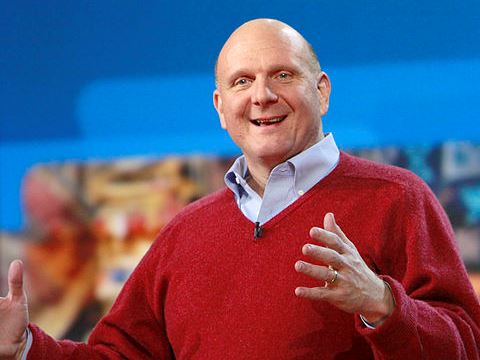Apps & Software
Microsoft CEO Ballmer: A Restructuring to What End?
Published:
Last Updated:
Steve Ballmer, Microsoft Corp.’s (NASDAQ: MSFT) chief executive officer for more than a decade, will try to do what he has been unable to do through most of his tenure. He will begin to rebuild a company that many observers believe can never be rebuilt to any important effect. He will start with one of the oldest corporate repair tools in the book. He will restructure Microsoft around the latest version of is constantly changing vision.
AllThingsD reported on Ballmer’s plan:
What seems likely is an organizational structure that will focus on configuring Microsoft around devices and services, both in the enterprise and the consumer space, and simplifying its management. Currently, Microsoft has a rather convoluted set-up, with other major units such as Business Solutions, Online Services and Microsoft Office.
The logic behind the plan is powerful. Whether the plan will work is unlikely. All it does it take Microsoft’s product lines and move them into new management structures, which may be better suited to development and marketing. However, highly successful development of major products has been stalled for years. And the mighty Microsoft marketing machine cannot market what it does not have — products that are revolutionary enough to gain it a new generation of very rapid sales growth, and a resurrection of its reputation as being one of the world’s great innovative organizations.
Microsoft’s large Servers and Tools division should have been married to its Business division a long time ago. Each markets to enterprises and companies. Together the two operations brought in more than $11 billion last quarter out of total revenue for the company of just over $20 million. They are the two largest divisions by sales and made up $6 billion of Microsoft’s $7.6 billion in operating profit for the same period.
Microsoft’s Entertainment and Devices division is where Ballmer has staked a great deal of the company’s future, as it moves beyond the Xbox to its own tablets and, perhaps eventually, its own smartphones. This operation should also be the home of Microsoft’s devices joint ventures, which include,at least its relationships with Nokia Copr. (NYSE: NOK) and Barnes & Noble Inc. (NYSE: BKS). Each of these deals were set as means to get more market share for Windows mobile, but both of the firms are struggling. Microsoft’s hope is that as it makes its hardware more interactive and part of it large global network of Xbox, Nokia and Nook users, it can become a more important part of the world’s use of next age hardware such as smartphones, tablets and home entertainment.
A new organization would orphan two divisions: Windows, Microsoft’s greatest legacy, and its search engine Bing, Microsoft’s largest strategic failure. Window’s presence, at least on PCs, will falter as PCs do. And search is a market that Microsoft has attacked again and again without success.
The reorganization plan, if it happens at all, will combine divisions that belong together. That may make Microsoft a more efficient corporation. But it does not dig the company out of the one hole it cannot dig itself out of, at least as it is constituted today. It needs at least one product that will transform the technology world the way Windows did a generation ago. If Ballmer has such a product, he is keeping it close to his vest, and a reorganization is nothing more than a smoke screen. But the smoke screen is more likely to cover a series of strategic missteps and not the tech world’s “next big thing.”
The last few years made people forget how much banks and CD’s can pay. Meanwhile, interest rates have spiked and many can afford to pay you much more, but most are keeping yields low and hoping you won’t notice.
But there is good news. To win qualified customers, some accounts are paying almost 10x the national average! That’s an incredible way to keep your money safe and earn more at the same time. Our top pick for high yield savings accounts includes other benefits as well. You can earn up to 3.80% with a Checking & Savings Account today Sign up and get up to $300 with direct deposit. No account fees. FDIC Insured.
Click here to see how much more you could be earning on your savings today. It takes just a few minutes to open an account to make your money work for you.
Thank you for reading! Have some feedback for us?
Contact the 24/7 Wall St. editorial team.